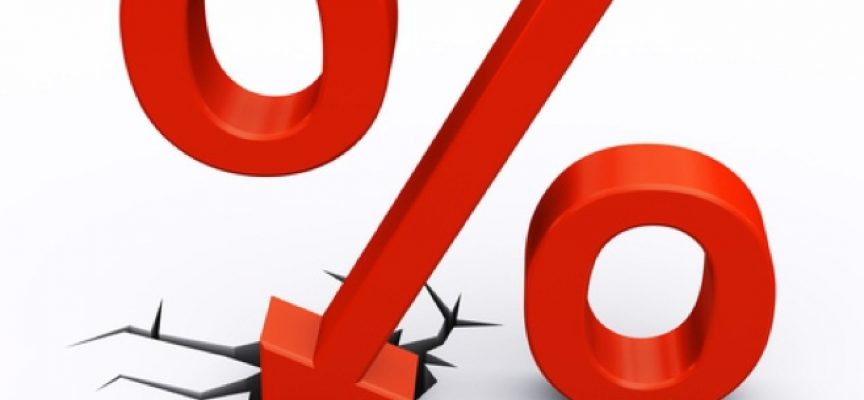from Rob Moore
Is U.S. Inflation On the Way Down?
Market Questions is the FT’s guide to the week ahead
by Jennifer Hughes, Valentina Romei, and Mari Novik
FT

January’s consumer price index data is due on Wednesday and is expected to show a slight slowing of the rate of price rises, though that is unlikely to be enough to rush the central bank into another interest rate cut.
The closely watched core inflation measure, which strips out volatile food and energy prices, is expected to come in at 0.3 per cent month on month, for a 3.1 per cent year on year rate, according to economists polled by Reuters, down from 3.2 per cent in December. The headline rate is forecast to remain at 2.9 per cent.
Last month the Fed left rates on hold and signalled it was in no hurry to ease further unless the data supported such a move.
An Inflation Deja Vu?
by Mike Maharrey
GoldSeek
 Are we heading for a repeat performance of the resurrection of inflation that we saw in the mid-1970s?
Are we heading for a repeat performance of the resurrection of inflation that we saw in the mid-1970s?
It sure appears to be set up that way.
The Federal Reserve declared victory over price inflation over the summer when it began rolling back its balance sheet reduction. In September, it took another step, initiating a supersized 50 basis point interest rate cut, followed by additional cuts in November and December.
At the time, I said it wasn’t a victory. It was a surrender.
I’ve been arguing for months that the central bank never did enough to slay price inflation. The trajectory of the CPI in recent months seems to bear this out. After dropping as low as 2.4 percent on an annual basis in September, the CPI has crept up for the past three months and stood at 2.9 percent in December. Meanwhile, core CPI has been mired around 3 percent since last summer. It’s clear that inflation isn’t dead.
It’s sticky.
World Inflation at Risk of Rekindling with Trump’s Trade War
by Jana Randow, Katia Dmitrieva and Enda Curran
The Spokesman
 The more President Donald Trump threatens tariffs on the U.S.’s trading partners, the more the worry of another inflation wave troubles global economists.
The more President Donald Trump threatens tariffs on the U.S.’s trading partners, the more the worry of another inflation wave troubles global economists.
Stubborn consumer-price growth was bothering much of the world even before he entered the White House. With this week’s measures against China offering the first concrete evidence that Trump isn’t just jawboning, prospects for at least some escalation and counter-measures elsewhere are forcing analysts to question how far global disinflation can hold.
“Tariff wars are inflationary, that’s not up for debate,” said Carsten Brzeski, ING’s global head of macro research. “In many places, they add to lingering effects from the past inflation shock, as well as big structural challenges” like aging societies and climate change, he said. “There are currently only very few reasons to expect inflation to remain permanently low.”
While China shows little sign of vulnerability to a price shock for now, the same can’t be said for the rest of the world if some spiral of tariffs unfolds. Multiple economies face latent inflation pressures, either domestic or external.
Daily Voice: Sharp Decline in Food Prices Likely to Bring CPI Inflation Down to Around 4.5% in January, Says This Fund Manager
The budget has the potential to lay a strong foundation for the equity market, said Alok Ranjan of ITI Mutual Fund.
by Sunil Shankar Matkar
Money Control
 “The sharp decline in food prices, particularly vegetables, is expected to bring CPI inflation down to around 4.5% in January,” said Alok Ranjan, the Senior Fund Manager at ITI Mutual Fund in an interview to Moneycontrol.
“The sharp decline in food prices, particularly vegetables, is expected to bring CPI inflation down to around 4.5% in January,” said Alok Ranjan, the Senior Fund Manager at ITI Mutual Fund in an interview to Moneycontrol.
According to him, with inflation showing signs of moderation, a rate cut in February is anticipated for India.
He believes the budget has the potential to lay a strong foundation for the equity market. With more money in the hands of the middle class via tax reliefs, budget could serve as a catalyst for consumption, driving demand across key sectors, Ranjan said.
Bank of England Cuts Rates and Growth Outlook, Sees Inflation ‘Bump’
by David Milliken and Andy Bruce
Reuters.com
 LONDON, Feb 6 (Reuters) – The Bank of England cut interest rates by a quarter-point and some policymakers wanted a bigger move to offset a slowdown, but the BoE said it would be careful about further moves in the face of an expected inflation spike and global economic uncertainty.
LONDON, Feb 6 (Reuters) – The Bank of England cut interest rates by a quarter-point and some policymakers wanted a bigger move to offset a slowdown, but the BoE said it would be careful about further moves in the face of an expected inflation spike and global economic uncertainty.
The BoE halved its 2025 growth outlook – a blow for finance minister Rachel Reeves who is pushing to speed up the economy – and said inflation would be almost double its 2% target this year. Governor Andrew Bailey said he thought that would prove to be a “bump in the road” before inflation falls back.
Thursday’s rate cut to 4.5% from 4.75% was in line with expectations in a Reuters poll of economists.
But investors were surprised that Catherine Mann – previously the Monetary Policy Committee member most opposed to rate cuts – joined Swati Dhingra to seek a bigger reduction to 4.25%.
Interest Rate Moves, Plus the World is Waking Up to Gold & Silver
from King World News
 Here is a look at interest moves by central banks today, plus the world is waking up to gold and silver.
Here is a look at interest moves by central banks today, plus the world is waking up to gold and silver.
The Gamble To Keep Interest Rates Low
February 6 (King World News) – Peter Boockvar: There is one thing to harass and jawbone Jay Powell to lower short term rates and another completely different thing trying to tame the long end of the yield curve which of course can only be influenced indirectly (outside of the Fed itself directly getting involved via asset purchases). Treasury Secretary Scott Bessent said on Fox Business yesterday that he and Trump are “focused on the 10 year Treasury. He is not calling for the Fed to lower rates.”
Economists Brace for Trump’s New Trade War to Rekindle Inflation Worldwide
by Jana Randow, Katia Dmitrieva and Enda Curran
The Japan Times

Stubborn growth in consumer prices was bothering much of the world even before Trump entered the White House. With this week’s measures against China offering the first concrete evidence that he isn’t just jawboning, prospects for at least some escalation and countermeasures elsewhere are forcing analysts to question how far global disinflation can hold.
“Tariff wars are inflationary, that’s not up for debate,” said Carsten Brzeski, ING’s global head of macro research. “In many places, they add to lingering effects from the past inflation shock, as well as big structural challenges” like aging societies and climate change, he said. “There are currently only very few reasons to expect inflation to remain permanently low.”
Will Salary Increases Outpace Inflation in 2025?
by John M. Bremen
Forbes
![]() After several years of aggressive salary growth combined with talent shortages, effective leaders around the world are now recalibrating their approaches in response to a shifting economic landscape.
After several years of aggressive salary growth combined with talent shortages, effective leaders around the world are now recalibrating their approaches in response to a shifting economic landscape.
What is happening with salary increases and talent shortages?
The December 2024 edition of WTW’s Global Salary Budget Planning Report suggests that salary increase budgets are stabilizing, with 2025 planned increases projected to be on average 3.7%, compared with 3.8% in 2024. Salary increases remain at a relatively high rate by historic standards (the pre-pandemic norm was 3%) amid higher total labor expenses (which include salaries, bonuses, variable pay and benefits costs). Overall, fewer organizations (36%) reported difficulty in attracting and retaining employees, down nine percentage points from last year and 17 percentage points from the year prior.
Disney+ Streaming Service Sheds 1 Million Subscribers Following Price Hike
by Simon Kent
Breitbart.com
 Disney’s traditional television business continues to decline with operating income at so-called linear networks dropping sharply by 11 percent to $1.1 billion in the last financial quarter.
Disney’s traditional television business continues to decline with operating income at so-called linear networks dropping sharply by 11 percent to $1.1 billion in the last financial quarter.
Subscribers for the company’s flagship streaming video service, Disney+, slipped one percent from the prior quarter to 124.6 million, Reuters reports.
The company had warned of a drop in subscribers because of a price increase that took effect in October. It also forecast a modest decline in Disney+ subscribers in the second quarter, compared to the first.
Advertisers are also hesitant to engage with Disney+.
As Breitbart News reported, the streaming service is reportedly facing an exodus of advertisers from its ad-supported tier after subscriptions failed to meet expectations last year and several high-profile Star Wars and other Lucasfilm series flopped with viewers.
Russians Are Buying Huge Amounts of Gold with the Ruble Under Pressure from High Inflation and Sanctions
The World Gold Council said Russians bought 75.6 metric tons of gold last year, up by 6% from 2023.
by Matthew Fox
Business Insider
Russian consumers are buying record amounts of gold, according to data from the World Gold Council.
The organization said in a report published on Wednesday that Russian consumers purchased 75.6 metric tons of the precious metal last year, representing a 6% jump from 2023 and a 62% increase from 2021, right before the war in Ukraine broke out.
Russians have been piling up gold — which investors often view as a safe-haven asset— as surging inflation and strict sanctions eat into the value of the ruble domestically and internationally.
Russia’s statistics agency has said the country’s inflation rate in 2024 was 9.5%, the highest level since the war broke out in February 2022, and recent data indicates prices have continued to rise in the first few weeks of 2025.
